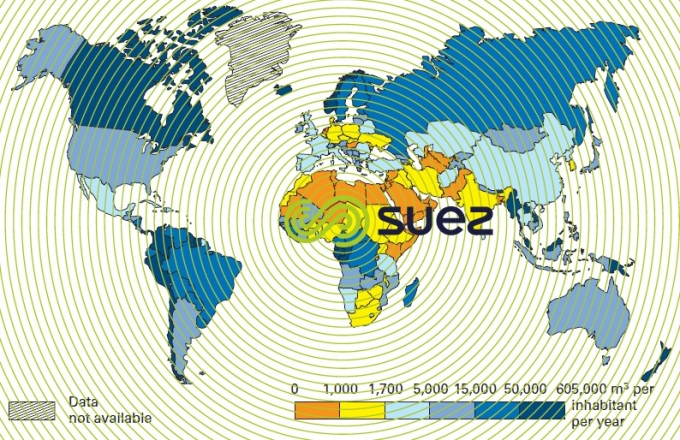natural water
Reading time:Our available natural water reserves consist of groundwater (infiltration, aquifers), stagnant surface water(lakes and reservoirs) or flowing water (streams and rivers) and seawater.
The following sections provide:
- a brief overview of each of these three types of resources;
- the basic pinciples applicable to the main cycles concerned in respect of considerations that prioritise ecology and water treatment (carbon, nitrogen, phosphorous, sulphur, iron and manganese);
- finally, concepts on degradation that is posing a threat to contintental freshwater eutrophication: various types of pollution (chemical, radioactive, etc.).
In France, a total of approximately 40 billion m³ (40 km³) of freshwater is extracted each year. 60% of this amount is used by thermal power plants, 15% is processed to provide drinking water, 13% is intended for agricultural use and 12% is taken up by industry. These extractions represent a demand that is slightly less than 700 m³ per year per inhabitant, placing France halfway along the scale of a demand that ranges from very low (< 100) to very high (> 2,000). The latter level is attributable to the heavy demand made by irrigation (a typical example being the USA).
In order to cope with this level of extraction, it is felt that the total renewable resource worldwide is equal to 40,000 km³ per year. However, the map in figure 1 reveals major differences. This is all the more relevant because the average availability per inhabitant, at least in the case of the fairly extensive states, hides major local differences . E.g. the north-east of the USA is very water-rich compared to the south-west that is arid; northern Chile is a desert but the south has an abundance of water.



The UN and the World Water Council believe that a state of tension begins to affect ressources ("water stress" as soon as renewable resources fall below 1,700 m³ per inhabitant and per year and that this condition becomes critical from 1,000 m³ per inhabitant and per year; it is clear that many countries have already reached or will soon reach that limit (please refer to demographic growth) and will be compelled to resort either to transporting water over extremely long distances (even across national borders) or to finding new resources such as wastewater re-use and/or seawater desalination. We should not omit potential sources generated by the fight on network leaks and other wastage.
Bookmark tool
Click on the bookmark tool, highlight the last read paragraph to continue your reading later












